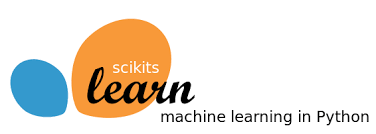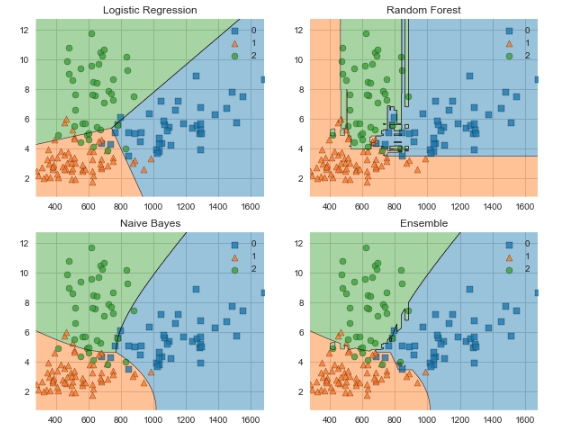Python is one among the foremost fashionable and widely used programming languages and has replaced several programming languages within the business.
The reasons why Python is fashionable among developers and one among them is that it’s a surprisingly massive assortment of libraries that users will work with.
There are many vital reasons why Python is popular:
- Python includes a Brobdingnagian assortment of libraries.
- Python is thought because of the beginner’s level of artificial language thanks to its simplicity and easiness.
- From developing to deploying and maintaining Python needs its developers to be additional productive.
- Portability is one more reason for the Brobdingnagian quality of Python.
- Python’s programming syntax is easy to be told and is of high level compared to C, Java, and C++.
Hence, new applications may be developed by writing fewer lines of codes.
The simplicity of Python has attracted several developers to form new libraries for machine learning. thanks to the large assortment of libraries Python is changing into massively fashionable among machine learning specialists.
So the 1st library in our high ten Python libraries weblog is TensorFlow.
What Is TensorFlow?

If you’re presently functioning on a machine learning project in Python, then you will have detected regarding this fashionable open supply library called TensorFlow.
This library was developed by Google together with Brain Team. TensorFlow is employed in virtually each Google application for machine learning.
TensorFlow works sort of a procedure library for writing new algorithms that involve an outsized range of tensor operations, since neural networks may be simply expressed as procedure graphs they will be enforced using TensorFlow as a series of operations on Tensors. Plus, tensors are N-dimensional matrices that represent your information.
Where Is TensorFlow Used?
You are using TensorFlow daily however indirectly with applications like Google Voice Search or Google Photos. These applications are developed using this library.
All the libraries created in TensorFlow are written in C and C++. However, it’s a sophisticated front-end for Python. Your Python code can get compiled so dead on TensorFlow distributed execution engine engineered using C and C++.
The number of applications of TensorFlow is virtually unlimited which is that the great thing about TensorFlow.
So, next au fait this ‘Top ten Python Libraries’ weblog we’ve got Scikit-Learn!
What Is Scikit-learn?

It is a Python library is related to NumPy and SciPy. it’s thought-about jointly of the simplest libraries for operating with complicated information.
There are tons of changes being created during this library. One modification is that the cross-validation feature, providing the power to use quite one metric. several coaching strategies like supply regression and nearest neighbours have received some very little enhancements.
Where Is Scikit-Learn Used?
It contains a varied range of algorithms for implementing normal machine learning and data processing tasks like reducing spatiality, classification, regression, clustering, and model choice.
So, next one of this ‘Top ten Python Libraries’ weblog, we’ve got Numpy!
What Is Numpy?

Numpy is taken into account jointly of the foremost fashionable machine learning library in Python.
TensorFlow and different libraries use Numpy internally for acting multiple operations on Tensors. Array interface is the best and also the most significant feature of Numpy.
Features Of Numpy
- Interactive: Numpy is extremely interactive and straightforward to use.
- Mathematics: Makes complicated mathematical implementations terribly easy.
- Intuitive: Makes writing real easy and grasping the ideas is simple.
- A lot of Interaction: wide used, therefore tons of open supply contribution.
Where Is Numpy Used?
This interface may be utilised for expressing pictures, sound waves, ANd different binary raw streams as an array of real numbers in N-dimensional.
For implementing this library for machine learning having information about Numpy is vital for full-stack developers.
So next au fait this ‘Top ten Python Libraries’ weblog, we’ve got Keras!
What Is Keras?

Keras is taken into account jointly of the good machine learning libraries in Python. It provides a better mechanism for specific neural networks. Keras conjointly provides a number of the simplest utilities for assembling models, process data-sets, visualisation of graphs, and far additional.
In the backend, Keras uses either Theano or TensorFlow internally. a number of the foremost fashionable neural networks like CNTK may also be used. Keras is relatively slow once we compare it with different machine learning libraries. as a result of it creates a procedure graph by victimization back-end infrastructure so makes use of it to perform operations. All the models in Keras are moveable.
Features Of Keras
- It runs swimmingly on each processor and GPU.
- Keras supports most models of a neural network – totally connected, convolutional, pooling, recurrent, embedding, etc. moreover, these models may be combined to create additional complicated models.
- Keras, being standard in nature, is unbelievably communicative, flexible, and apt for innovative analysis.
- Keras could be a fully Python-based framework, that makes it simple to correct and explore.
Where Is Keras Used?
You are already perpetually interacting with options engineered with Keras it’s in use at Netflix, Uber, Yelp, Instacart, Zocdoc, Square, and plenty of others. it’s particularly fashionable among startups that place deep learning at the core of their merchandise.
Keras contains varied implementations of ordinarily used neural network building blocks like layers, objectives, activation functions, optimizers and a bunch of tools to form operating with image and text information easier.
Plus, it provides several pre-processed data-sets and pre-trained models like MNIST, VGG, Inception, SqueezeNet, ResNet etc.
Keras is additionally a favourite among deep learning researchers, returning in at #2. Keras has conjointly been adopted by researchers at massive scientific organizations, in particular, CERN and National Aeronautics and Space Administration.
The 5th popular library is PyTorch!
What Is PyTorch?

PyTorch is that the largest machine learning library that enables developers to perform tensor computations was the acceleration of GPU, creates dynamic procedure graphs, and calculate gradients mechanically. apart from this, PyTorch offers made arthropod genus for resolution application problems associated with neural networks.
This machine learning library relies on Torch, that is AN open supply machine library enforced in C with a wrapper in Lua.
This machine library in Python was introduced in 2017, and since its beginning, the library is gaining quality ANd attracting an increasing range of machine learning developers.
Where Is PyTorch Used?
PyTorch is primarily used for applications like language process.
It is primarily developed by Facebook’s artificial-intelligence analysis cluster and Uber’s “Pyro” code for probabilistic programming is constructed thereon.
PyTorch is outperforming TensorFlow in multiple ways in which and it’s gaining tons of attention within the recent days.
Sixthly, here comes LightGBM.
What Is LightGBM?
Gradient Boosting is one among the simplest and most well-liked machine learning library, that helps developers in building new algorithms by victimization redefined elementary models and specifically call trees. Therefore, there are special libraries that are designed for quick and economical implementation of this methodology.
These libraries are LightGBM, XGBoost, and CatBoost. of these libraries are competitors that helps in resolution a typical downside and may be utilised in virtually a similar manner.
Where Is LightGBM Used?
These library offers to provide extremely ascendible, optimized, and quick implementations of gradient boosting, that makes it fashionable among machine learning developers. as a result of most of the machine learning, full-stack developers won machine learning competitions by victimization these algorithms.
What Is Eli5?

Most often the results of machine learning model predictions don’t seem to be correct, and Eli5 machine learning library inbuilt Python helps in overcoming this challenge. it’s a mix of visualisation ANd correct all the machine learning models and track all operating steps of an algorithmic program.
Features of Eli5
Moreover, Eli5 supports other libraries XGBoost, lightning, sci-kit-learn, and sklearn-crfsuite libraries. All the preceding libraries may perform totally different tasks victimization each of them.
Where Is Eli5 Used?
- Mathematical applications which need tons of computation during a short time.
- Eli5 plays an important role wherever there are dependencies with different Python packages.
- Legacy applications and implementing newer methodologies in numerous fields.
What Is SciPy?

SciPy could be a machine learning library for application developers and engineers. However, you continue to ought to grasp the distinction between SciPy library and SciPy stack. SciPy library contains modules for improvement, algebra, integration, and statistics.
Features Of SciPy
- The main feature of SciPy library is that it’s developed victimization NumPy, and its array makes the foremost use of NumPy.
- In addition, SciPy provides all the economical numerical routines like an improvement, numerical integration, and plenty of others victimization its specific submodules.
- All the functions all told submodules of SciPy are well documented.
Where Is SciPy Used?
- SciPy could be a library that uses NumPy for the aim of resolution mathematical functions. SciPy uses NumPy arrays because of the basic system and comes with modules for numerous ordinarily used tasks in scientific programming.
- Tasks as well as algebra, integration (calculus), standard equation resolution and signal process are handled simply by SciPy.
What Is Theano?

Theano could be a procedure framework machine learning library in Python for computing multidimensional arrays. Theano works like TensorFlow, however it not as economical as TensorFlow. thanks to its inability to suit into production environments.
Moreover, Theano may also be used on a distributed or parallel environments simply like TensorFlow.
Features Of Theano
- Tight integration with NumPy – Ability to use fully NumPy arrays in Theano-compiled functions.
- Transparent use of a GPU – Perform data-intensive computations a lot of quicker than on a processor.
- Efficient symbolic differentiation – Theano will your derivatives for functions with one or several inputs.
- Speed and stability optimizations – Get the correct account log(1+x) even once x is extremely little. this is often only one of the examples to point out the soundness of Theano.
- Dynamic C code generation – judge expressions quicker than ever before, thereby, increasing potency by tons.
- Extensive unit-testing and self-verification – find and diagnose multiple forms of errors and ambiguities within the model.
Where Is Theano Used?
- The actual syntax of Theano expressions is symbolic, which may be off-put to beginners want to traditional code development. Specifically, expressions are outlined within the abstract sense, compiled and later truly want to create calculations.
- It was specifically designed to handle the kinds of computation needed for giant neural network algorithms utilized in Deep Learning. it had been one among the primary libraries of its kind (development started in 2007) ANd is taken into account a business normal for Deep Learning analysis and development.
- Theano is being employed in multiple neural networks comes these days and also the quality of Theano is just growing with time.
And, lastly, on this ‘Top ten Python Libraries’ weblog, we’ve got Pandas!
What Is Pandas?

Pandas could be a machine learning library in Python that has information structures of high-level and a good type of tools for analysis. one among the good feature of this library is that the ability to translate complicated operations with information victimization one or 2 commands. Pandas have such a big amount of intrinsic strategies for grouping, combining information, and filtering, in addition as time-series practicality.
All these are followed by outstanding speed indicators.
Features Of Pandas
Pandas confirm that the complete method of manipulating information is going to be easier. Support for operations like Re-indexing, Iteration, Sorting, Aggregations, Concatenations and Visualizations are among the feature highlights of Pandas.
Conclusion
Python language has become the most popular language for most of the fields. You easily can use this language any kind of purpose like scientific research, developing products, finance, marketing or creating games. Therefore, Python offers you a lot of libraries that can improve your work. In summary, libraries work different purposes and you can start learning and using libraries starting from the most used ones in order to improve your experience in Python.

